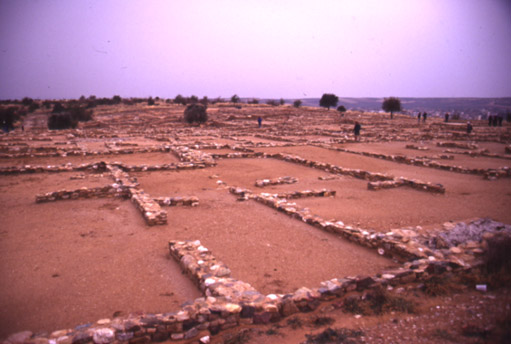

Location
Olynthus is an ancient city located 2.5 km inland from the sea between the westernmost and central “fingers” of the Chalcidic peninsula. The city is built on two flat-topped hills rising about 30-40 m above the North and South hills.7
History
The city had belonged to the Bottiaeans, a Thracian tribe, until 479 BC when the Persian general Artabazus exterminated the inhabitants and started the town over with a fresh population of Greeks, making it a Greek polis. It remained insignificant until the synoecism in 432, when the inhabitants of a number of small Chalcidian towns added to its population; it ranked as the chief Hellenic city west of the Strymon and revolted from Athens as a member of the Delian League in the early days. In the 4th century it became the head of the Chalcidic League, earning great importance in politics. There are coins of the league dated back as early as 405 and one specimen to 415-420.
About 390, a treaty was made with the king of Macedon, Amyntas, and by 382 most of the Greek cities west of the Strymon had been absorbed by Olynthos. After three years of indecisive warfare with Sparta, the city consented to dissolve the confederacy in 379, but a year or two later, it appeared as a member of the Athenian naval confederacy. Twenty years later, the power of Olynthus is asserted by Demosthenes to have been much greater than before the Spartan expedition. Olynthus was in alliance with Athens during the Social War, but sensing the impending growth of power, the alliance was concluded shortly. Philip of Athens destroyed the city in 348.8